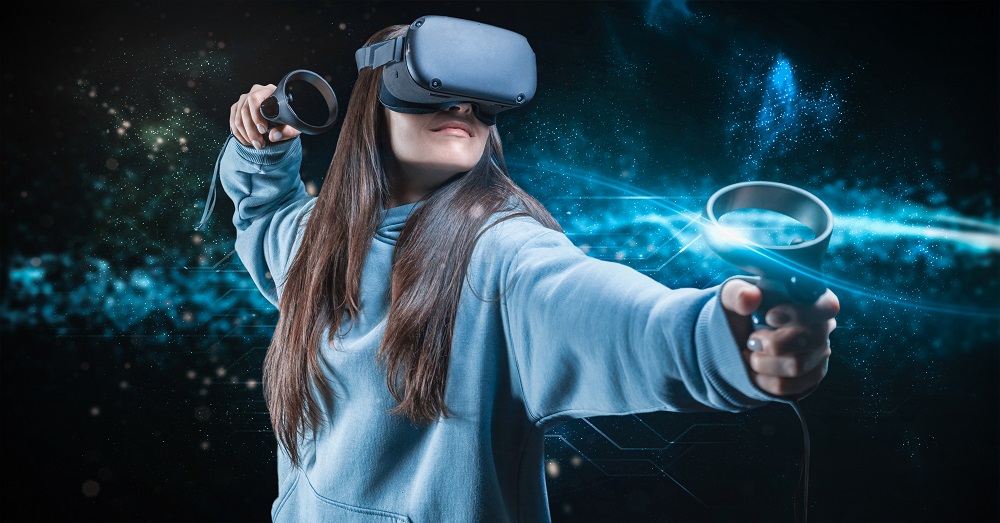Virtual Reality (VR) is revolutionizing the gaming landscape, offering players an unprecedented level of immersion and interactivity. As technology advances, the boundaries between the virtual and real worlds continue to blur, creating experiences that were once the stuff of science fiction. In this article, we will explore how VR is changing the gaming experience, from enhancing player engagement to creating lifelike environments that transport gamers into new realms of adventure.
As we delve deeper into the impact of VR on gaming, you will discover the various ways this technology is reshaping gameplay mechanics and storytelling. We will examine the innovative tools and platforms that are making VR more accessible to gamers of all ages, as well as the challenges developers face in creating compelling VR content. Additionally, we will highlight some of the most exciting VR games currently available, showcasing how they push the boundaries of traditional gaming.
Whether you are a seasoned gamer or new to the world of virtual reality, this article will provide valuable insights into the future of gaming. Join us as we uncover the transformative power of VR and its potential to redefine how we play, connect, and experience games. Read on to learn more about the exciting developments in this dynamic field!
Virtual Reality (VR) technology is revolutionizing the gaming industry by providing immersive experiences that were previously unimaginable. This article explores various aspects of how VR is transforming gaming, enhancing player engagement, and creating new opportunities for developers.
Immersive Gameplay
One of the most significant impacts of VR on gaming is the level of immersion it offers. Players can step into a virtual world, experiencing games from a first-person perspective that traditional gaming cannot replicate. This immersive gameplay allows players to interact with their environment in a more meaningful way, making them feel as though they are truly part of the game.
As a result, VR games often lead to heightened emotional responses and a deeper connection to the storyline and characters. This level of engagement can transform casual gamers into dedicated fans, as they become more invested in the outcomes of their virtual adventures.
Enhanced Social Interaction
VR is also changing the way players interact with one another. Multiplayer VR games allow users to connect in a shared virtual space, fostering a sense of community and collaboration. Players can communicate through voice chat and even see each other’s avatars, making interactions feel more personal and engaging.
This social aspect of VR gaming can lead to lasting friendships and a more vibrant gaming community. As players collaborate to achieve common goals, they experience a sense of camaraderie that enhances the overall gaming experience.
Innovative Game Design
The introduction of VR has prompted developers to rethink game design. Traditional mechanics may not translate well to a VR environment, leading to the creation of new gameplay styles and mechanics that take advantage of the technology. For instance, developers are exploring unique ways to utilize hand tracking and motion controls, allowing players to physically interact with the game world.
This innovation not only enhances gameplay but also encourages creativity among developers, resulting in a diverse range of VR titles that cater to various interests and preferences.
Physical Engagement and Fitness
VR gaming often requires players to move around, which can lead to increased physical activity. Many VR games incorporate movement, encouraging players to engage their bodies as they play. This aspect of VR gaming can promote fitness and well-being, making it an attractive option for those looking to combine entertainment with exercise.
As a result, VR has the potential to transform gaming from a sedentary activity into a more active and health-conscious pursuit, appealing to a broader audience.
Accessibility and Inclusivity
VR technology is also making strides in accessibility, allowing individuals with disabilities to experience gaming in new ways. Developers are increasingly focusing on creating inclusive VR experiences that cater to a diverse range of players, ensuring that everyone can enjoy the benefits of virtual reality.
This commitment to accessibility not only broadens the gaming audience but also fosters a more inclusive gaming culture, where players of all backgrounds can come together to enjoy shared experiences.
Storytelling and Narrative Depth
VR has the power to enhance storytelling in games by placing players directly in the narrative. This immersive approach allows players to experience the story from a unique perspective, making choices that can influence the outcome. The ability to explore environments and interact with characters in real-time adds depth to the narrative, creating a more engaging experience.
As a result, VR games often feature richer storylines and character development, drawing players into the world in ways that traditional games may struggle to achieve.
The Future of VR Gaming
The future of VR gaming looks promising, with advancements in technology continually pushing the boundaries of what is possible. As hardware becomes more affordable and accessible, a wider audience will be able to experience VR gaming. Additionally, improvements in graphics and processing power will lead to even more realistic and immersive experiences.
As the industry evolves, we can expect to see innovative titles that leverage the unique capabilities of VR, further transforming the gaming landscape.
Challenges and Limitations
Despite its many advantages, VR gaming does face challenges. Issues such as motion sickness, the need for physical space, and the cost of equipment can deter some players from fully embracing the technology. Developers are actively working to address these concerns, creating more comfortable and accessible experiences.
As the industry continues to grow, overcoming these challenges will be crucial in ensuring that VR gaming reaches its full potential and becomes a mainstream form of entertainment.
| Aspect | Description |
|---|---|
| Immersive Gameplay | VR technology allows players to be fully immersed in the game world, providing a sense of presence that traditional gaming cannot match. |
| Enhanced Interaction | Players can interact with the game environment in a more natural way, using hand gestures and body movements to control their actions. |
| Social Experiences | VR enables multiplayer experiences where players can meet and interact in virtual spaces, enhancing social connections. |
| Realistic Graphics | Advancements in VR graphics create lifelike environments, making games more visually appealing and engaging. |
| Physical Engagement | VR games often require physical movement, promoting a more active gaming experience and encouraging physical fitness. |
| Storytelling | VR allows for innovative storytelling techniques, where players can experience narratives from different perspectives within the game world. |
| Accessibility | VR can provide unique gaming experiences for individuals with disabilities, offering tailored controls and environments. |



